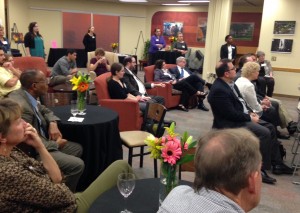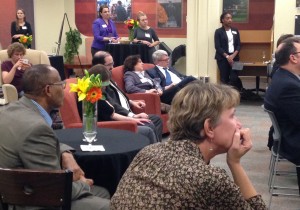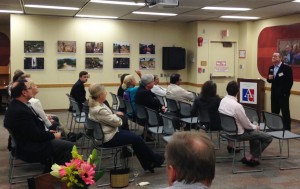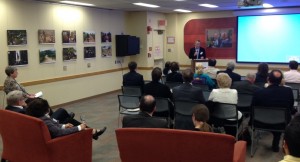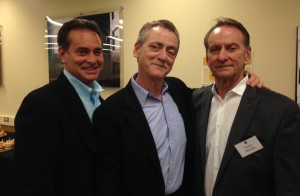WASHINGTON, DC, 22 October 2015 — This event marked the formal handover, to the library at American University, of the use and distribution of some 30,000 images that I’ve generated over nearly four decades while working mostly for Newsweek Magazine. These include images from my coverage of Mexico, Central America, South America, the Caribbean, the Persian Gulf, Iraq, Afghanistan, Africa. They become part of the library’s collection of some of the visual history of our planet, of our time on it.
The heart and the soul of my collection is the work on Nicaragua, where I first covered conflict, where I first became politically aware, where I first was married, and where I made my first book. My collection of images from the 1980s Contra War is one of the most – if not the most – comprehensive and in-depth visual records of that conflict and of that historic time. This is partly because I lived in Nicaragua for seven years and had access to the ongoing story that few other journalists enjoyed.
With this donation, these visual documents become part of the public record, so that students, researchers, and non-profit organizations everywhere, can see for themselves what happened in those places and during those times. Many of these images were published, not just in Newsweek Magazine, but also in other magazines and in newspapers, around the world. But the vast majority of my students never saw them, because they were not even born yet. So now, for the first time, and with the use of the Internet, students, researchers and non-profits can see what the 1979 Sandinista Revolution really looked like. They can see the misery inflicted on the Nicaraguan people during the 1980s Contra War. They can witness the savagery of the Salvadoran Civil war. They can watch the Persian Gulf War unfold in the Saudi Arabian and Iraqi deserts. They can watch Cuban citizens mount home-made rafts and take to the sea in the hope that currents will land them in Florida. They can see U.S. servicemen and women in active duty in Iraq and Afghanistan.
And not only can they now see the images that were selected for publication, but they also will be able to see so much of the work that was NOT published. They will be able to see the story behind the story. The whole story.
(Photos by Esther Gentile)

